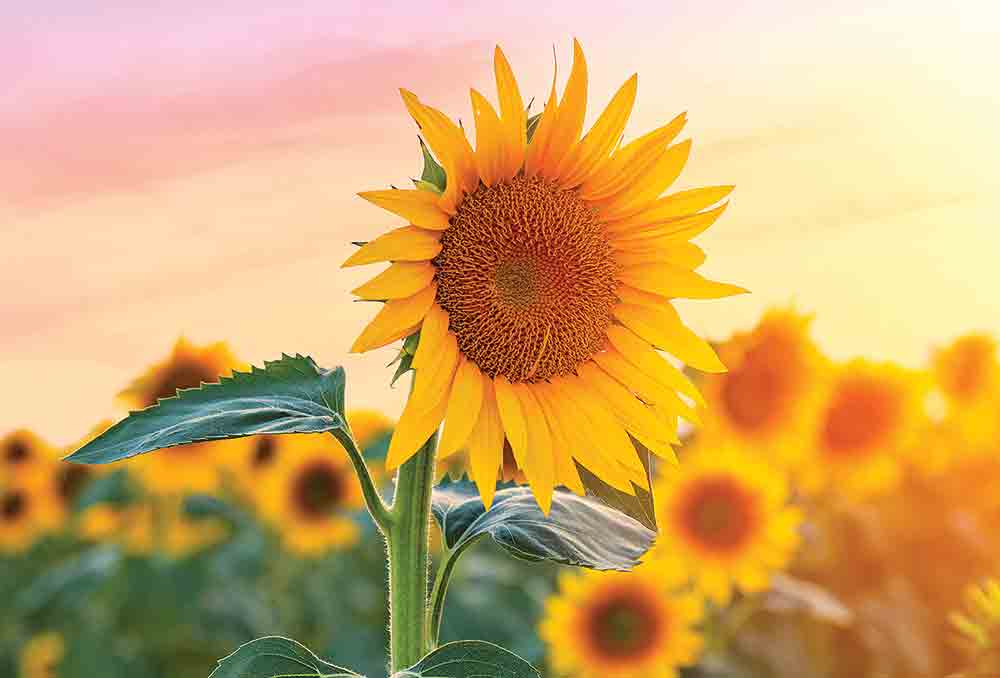
By Matthew R. March, MNRD
Polk County Extension Agent
Sunflowers are one of the most recognizable flower species. From wild sunflowers growing in roadside ditches to cultivated sunflower fields, nothing makes people smile more than these tall vibrant flowers.
Sunflowers come in a variety of colors and sizes but surprisingly all sunflowers, from wild ones to improved garden varieties, all are one species. There are hundreds of varieties of sunflowers, but they all originated from the annual sunflower (Helinanthus annuus). Annual sunflowers are the wild sunflower you see growing in roadside ditches and pastures across Texas, most of the U.S., southern Canada and Mexico. Sunflower anatomy is unique. When you look at a large sunflower head or what is technically called inflorescence, your first thought is a sunflower head is one flower. However, a sunflower head is made up of hundreds of individual flowers. The head consists of two types of flowers, ray flowers and disk flowers. Ray flowers produce the colorful petals you see around the edge of the sunflower head. Disk flowers are in the middle of the ray flowers and will bloom from the outside to the center of sunflower head. After the flowers bloom, they will mature to produce sunflower seeds. In other words, every seed is the product of each individual disc flower.
Improved sunflower varieties are divided into two categories, oil seed and confection. Oil seed sunflowers are used to produce sunflower oil or for bird seed. Sunflower oil is very healthy and low in saturated fats and is used in a variety of food products. Black peredovik is an oil seed sunflower variety that is commonly used for wildlife food plots. Confection sunflowers produce large seeds on large heads. Black strips are present along seed coat. Confection sunflowers are primarily grown to be roasted.
If you wish to grow sunflowers, select a site that will receive full sun and has well drained soil. Sunflowers prefer soils that are slightly acidic. Sunflowers can be grown by direct seeding seeds and seeds should be planted six inches to one foot apart depending on variety. Sunflowers are drought tolerant and generally require minimal supplemental watering in east Texas. Wildlife can be an issue when growing sunflowers from birds to squirrels that tend to make a meal out of the seeds.
Kansas is famous for being the sunflower state. So, you would think Kansas would produce more sunflowers than any other state. Shockingly, Kansas, which produces 45 million pounds of seeds, is sixth in sunflower production behind North Dakota (1.4 billion), South Dakota (1.1 billion), Minnesota (174 million), Texas (61 million) and Nebraska (46 million). In Texas, the major sunflower production region is the high plains around Amarillo and Lubbock. Sunflowers are also grown in the Hillsboro region south of Dallas and the valley of South Texas. Sunflowers are harvested like other grain crops such as corn and wheat using a combine. However, a specialty header is needed on the combine to harvest sunflowers.
Sunflowers are possibly one of the most recognizable flowers. While sunflowers’ vibrant colors are popular for adding color to landscaping, they are also an important food source for wildlife and an important economic crop for Texas.











Comment
Comments